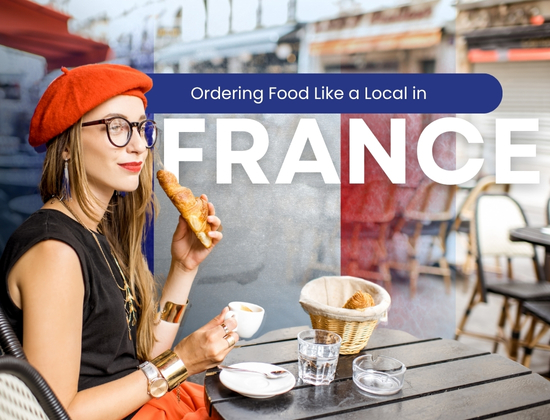
Ordering Food Like a Local in France: A Delicious Dive into French Dining Etiquette
.
If you’ve ever dreamed of sipping wine at a Parisian café or nibbling cheese in a cozy countryside bistro, you’re not alone. But when the menu looks like a secret code and your server seems more intimidating than friendly, ordering food in France can feel like an episode of Survivor: Gourmet Edition. Fear not! Mastering the art of ordering like a local isn't just about knowing the language—it's about understanding the rhythm, etiquette, and little cultural nuances that turn a simple meal into an experience à la française.
Let’s break down everything you need to know to dine with confidence and charm in the land of baguettes and brie!
1. Start with the Magic Words
The French place a high value on politeness. Always begin with a “Bonjour, monsieur/madame” before speaking to a waiter or entering a restaurant. It's not just courteous—it’s essential. Not greeting someone can come across as rude or disrespectful.
2. Understand the Menu Structure
French menus typically follow this structure:
-
Entrée (appetizer)
-
Principal (main course)
-
Fromage/Dessert (cheese or dessert)
Don’t confuse “entrée” with “main course” as in English—it means “starter” in French!
3. Know What’s Included
Many restaurants offer a formule or menu du jour—a fixed-price menu that includes a combination of entrée, plat, and dessert or cheese. These often offer the best value and showcase regional or seasonal specialties.
4. Be Clear, Be Kind
When you're ready to order, use phrases like:
-
“Je vais prendre…” (I’ll have…)
-
“Je voudrais…” (I would like…)
-
“Qu’est-ce que vous recommandez ?” (What do you recommend?)
Avoid shouting or snapping fingers to get the server’s attention. A discreet eye contact and a polite “s’il vous plaît” will go a long way.
5. Respect Mealtime Rituals
In France, lunch is usually served from 12:00 to 2:00 PM and dinner from 7:30 PM onward. Arriving outside these hours may mean limited options or a closed kitchen. Also, don’t expect a rushed meal—French dining is an experience, often lasting hours with multiple courses.
6. Tipping Isn’t Mandatory (But It’s Nice)
By law, service is included in the bill (“service compris”), but it’s still customary to leave a small tip—just a few euros or rounding up the total—as a thank-you for good service.
7. Practice Makes Perfect
The more you eat out, the more confident you’ll become. Don’t worry about making mistakes—most locals appreciate your effort to engage in their culture. A warm smile and a few well-placed French phrases can turn your dining experience from awkward to authentic.
Whether you’re enjoying a flaky croissant in Lyon or a plate of duck confit in Bordeaux, following these tips will help you order like a local—and enjoy France the way it’s meant to be savored: one bite at a time. Bon appétit!
Enroll in the French classes at The Language SKOOL and boost your learning experience!
???? +91 96234 02340
???? www.thelanguageskool.com












